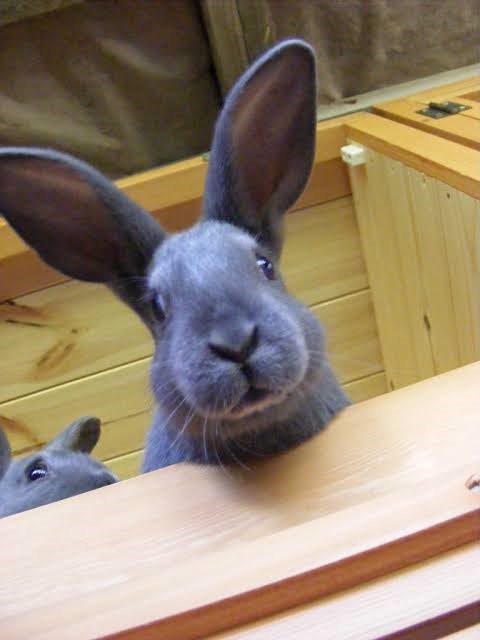Scientific Facts
| Common Name: | Siberian Rabbit |
| Scientific Name: | – |
| Life Span: | At least 5 years |
| Size: | 7 to 9 pounds |
| Habitat: | Domesticated |
| Country of Origin: | United Kingdom |
Siberian Rabbit Information
Do not let the name fool you as the Siberian Rabbit is not actually from Siberia or bred in Siberia but come from the United Kingdom. This domestic breed of rabbit first appeared in the market around the 1930s. Many believed that this rabbit was named as such because it was bred to be the second coming of the now-extinct original Siberian Rabbit. There are also those who believe that this animal is named the Siberian Rabbit precisely because it was originally meant for commercial purposes as its fur is thick enough to be used as coats in the harsh climate of Siberia.
Physical Description

The Siberian Rabbit is a medium-sized species of rabbits that were developed or bred in the UK back in the 1930s to replace the extinct rabbit of the same name. it was also bred because of how its coat can potentially be used for commercial purposes in the harsh climate of Siberia. In that regard, it actually features a classy-looking coat that is smooth, glossy, and very thick despite being only about an inch long.
Siberian Rabbits may have been originally black in terms of its color, but it has since been bred to come in all kinds of different colors that are all smooth and glossy. Some of the most popular varieties of Siberian Rabbits include blue, brown, and gray. The good thing about the Siberian Rabbit’s coat is that its color tends to be the same all over its body as you rarely see different shades in different parts of its body.
The overall body build of a Siberian Rabbit should be semi-arched as opposed to the plump and circular shape that most other domestic breeds of rabbits have. Most parts of its body are proportional in terms of size to the rest. Meanwhile, the ears are about 4 inches long at the rabbit’s full adult size.
Personality

The Siberian Rabbit has the same kind of personality as most other regular types of domestic rabbits in the sense that they are quite docile and receptive to human care and handling. They have no problems submitting to how their owners handle and carry them so long as they are not carried in a way that will agitate them. These rabbits are very tolerant of handling, but you should make sure that you have them getting used to handling at a young age so that it will be easier for them to feel safe when their owner handles them.
One of the other good personality traits that the Siberian Rabbit has is its calm and easygoing nature. It might not be the most sociable type of rabbit, but it will more than likely stay calm whenever you try to socialize and interact with it. Its easygoing personality allows it to go with the flow during playtime. There are also moments when this rabbit will display its affectionate side towards its owner or to a person it really trusts.
Life Span
There is no certainty as to how long a Siberian Rabbit gets to live. However, the general consensus is that this domesticated breed of rabbits can live at least 5 years when they are really taken care of properly.
Reproduction
Siberian Rabbits follow the same kind of reproductive behavior that is shared by most domesticated rabbits. They reproduce all year long and can breed multiple times in a single calendar year due to their short gestation period.
Behavior
Siberian Rabbits are generally regarded as very well-behaved breeds of rabbits. This can be due to how they are very calm and easygoing; they tend to be even when they are getting handled by strangers. They are more than likely to behave better when they are handled by their owners. On top of that, Siberian Rabbits are also not very active in the sense that they do not display as much energy as some other breeds of domesticated rabbits.
One of the smarter breeds of rabbits, Siberian Rabbits are very receptive to training. You can actually potty-train these rabbits. In some cases, they will respond well to simple commands and are just as easy to train as some other breeds of dogs. This makes this affectionate rabbit the ideal pet to have for many different kinds of households.
Eating Habits
Siberian Rabbits follow the standard diet that domesticated rabbits usually have. They thrive on meals that are mostly based on plants or grass. However, they are more than likely to respond better on a diet that is mostly comprised of hay. Most breeders would say that the Siberian Rabbit is better off given a diet that is about 70% hay. You can also give it a diet that is based on nutritious commercial rabbit pellets as those were specifically formulated to have a similar nutritional value as hay.
You can supplement your Siberian Rabbit’s diet with food that is based on vegetables, greens, and fruits. But keep in mind that these are only meant to supplement their diet and that you should always make sure to base their meals mainly on grass or on hay.
Cage
Siberian Rabbits are not particularly picky when it comes to the type of habitat you provide them. They can do well in a standard rabbit cage that can be found in most commercial pet stores. A regular-sized cage is also enough for the Siberian Rabbit because it is not the most active type of rabbit and that it actually is not very big compared to its bigger cousins in America. But it should be large enough for your rabbit to actually move and hop around when it needs to.
Furnishings are not too important when it comes to your rabbit’s cage. It can be as plain as possible. You can make up for the lack of decorations and furnishings by allowing your Siberian Rabbit some time out of its usual habitat so that it can enjoy roaming around and playing with toys that are safe for them.
Availability – Where to Get one
Siberian Rabbits can be pretty difficult to find in America but are a bit easier to find in the UK because that is where they were originally bred. Most breeders sell them at reasonable prices that range somewhere between $30 to $50.
How to Care for a Siberian Rabbit
Generally regarded as very hardy types of rabbits, the Siberian Rabbit is quite easy to take care of as long as you give it the type of care that most domesticated breeds of rabbit require. They eat the same type of food and require the same type of habitat that any type of captive-bred rabbit needs to thrive well. They also require the same kind of attention and affection on your part as most other domesticated breeds.
However, an important part of taking care of a Siberian Rabbit is to make sure that it gets to play with toys that it can chew on so that its teeth can stay healthy and short. They tend to have teeth that never stop growing so making sure that they get to chew on different types of toys is important in making sure that their teeth do not grow out of proportion
FAQs
Is the Siberian Rabbit a good pet to have?
Siberian Rabbits are great pets to have because of their calm and easygoing nature, and because of how affectionate they can get towards their owners.
Are Siberian Rabbits common?
Siberian Rabbits are more common in the UK than they are in the US.
For what purpose was the Siberian Rabbit bred for?
Siberian Rabbits were originally bred to be used for commercial purposes due to how beautiful and thick their fur is.
Can Siberian Rabbits be handled safely?
Siberian Rabbits are perfectly safe for handling due to how docile they are and how receptive they are to getting handled.

